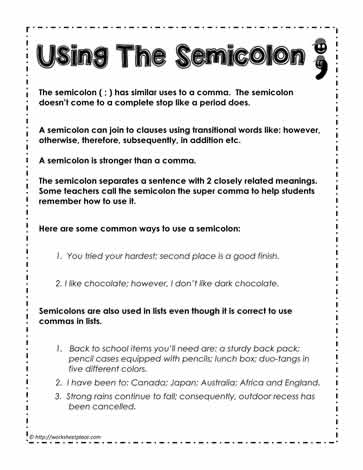| |||||
| The semicolon ( ; ) has similar uses to a comma. The semicolon doesn't come to a complete stop like a period does. A semicolon can join to clauses using transitional words like: however, otherwise, therefore, subsequently, in addition etc. A semicolon is stronger than a comma. The semicolon separates a sentence with 2 closely related meanings. Some teachers call the semicolon the super comma to help students remember how to use it. Here are some common ways to use a semicolon: 1. You tried your hardest; second place is a good finish. 2. I like chocolate; however, I don't like dark chocolate. Semicolons are also used in lists even though it is correct to use commas in lists. 1. Back to school items you'll need are: a sturdy back pack; pencil cases equipped with pencils; lunch box; duo-tangs in five different colors. 2. I have been to: Canada; Japan; Australia; Africa and England. 3. Strong rains continue to fall; consequently, outdoor recess has been cancelled. | |||||

All worksheets are created by experienced and qualified teachers. Send your suggestions or comments.